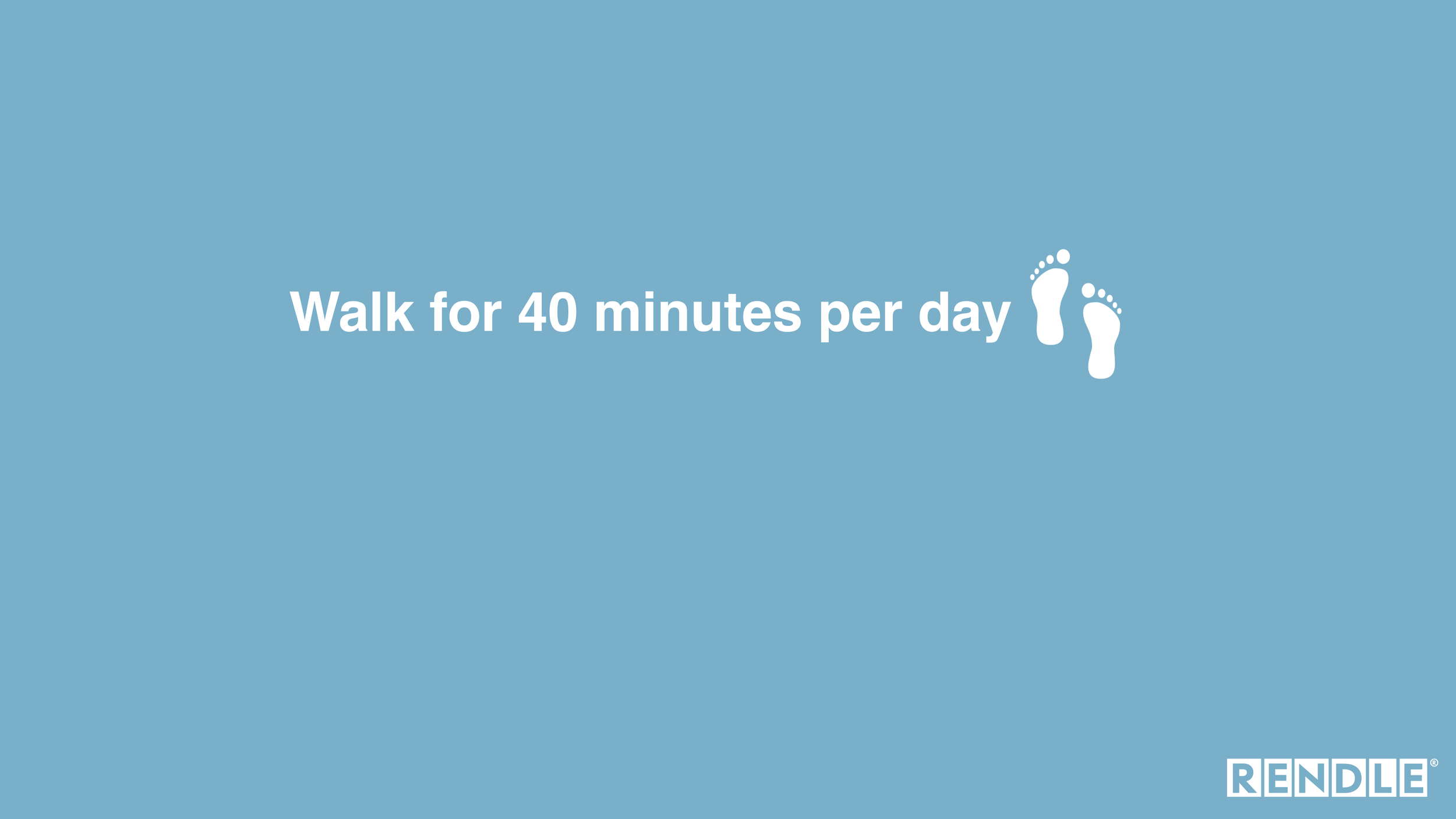How to make this happen in 7 steps:
💡 WALK FOR 40 MINUTES PER DAy
STEP 1: 🏆 VISUALIZE SUCCESS
Think about how great it would feel to be less stressed and to improve your outlook. Walking is a great way to boost both these things. It also helps you maintain a healthy weight and sleep better.
(This video provides an overview of the 7 steps displayed on this page)
STEP 2: 🔎 ANALYZE HOW MUCH YOU CURRENTLY WALK
You can’t expect to make successful changes without fully understanding your current routine. So think about your weekdays and weekends and how much time you spend walking. You may want to use a step counter or app that tracks your mileage or number of steps.
STEP 3: 🚧 IDENTIFY OBSTACLES
The main obstacle is that people are set in their routines and lack awareness about how much they walk each day. As mentioned in the previous step, wearing a step counter for a week or two will make you more aware of how much walking you do.
Additional examples of potential obstacles to overcome:
Perceived lack of time
Lack of motivation
Bad weather
STEP 4: ✏️ HOW YOU CAN MODIFY YOUR EXISTING ROUTINE TO MAKE YOUR HABIT HAPPEN
Think about your existing routine and find slots throughout the day when you could do some walking. It does not have to be 40 minutes at once. For instance, you could walk for 10 minutes before work and 10 minutes after work. You could also take a 20-minute walk during your lunch break. Different people have different routines, so try a few of the practical tips below and see what works best for you.
💡 Practical tips:
- Take the stairs rather than the escalator
- Walk to work if you can
- Take a walk after lunch and dinner
- At work get up and walk and stretch for 5 minutes if you have been sitting for a while
- Find a friend to walk with so you can encourage each other
- Substitute some of your non-work screen time (TV, social media) with some walking and a podcast
- Consider buying a walking treadmill
STEP 5: 👶🏼 START OUT SMALL
Starting out with baby steps will help you ease into the process, improving your chances of success. Just getting started can help overcome a perceived lack of motivation. Try walking for an additional 10 to 15 minutes a day and build it up from there.
STEP 6: ⏰ FIND A TRIGGER
A trigger is a cue that will serve as a reminder to perform your new habit. The best triggers are often existing tasks and rituals that you can tie your new behavior to. You should also test your trigger. If you find you are not executing your plan or you are simply forgetting, it means you need to identify a better trigger.
Examples of a trigger:
After I finish my lunch, I will take a short walk
Last thing at night, I will put my walking shoes next to the bed so that I see them as soon as I wake up
After I wake up, I will drink a glass of water and go for my morning walk
STEP 7: 🎈 CELEBRATE SUCCESS TO MAKE YOUR HABIT STICK
Celebrate success every single time you complete your new habit. It will help the habit stick. The celebration is a positive emotion. Our brains like positive reinforcement and many celebrations over time make it more likely our new habits become part of our automatic behavior. Celebrations can vary from person to person, so find one that works for you. You could celebrate by sharing the number of steps you did with a friend or by posting your activity on Strava. Other examples of celebrations are:
💪 Tell yourself “good work” after you walked 3 miles early in the morning
🙂 Smile and give yourself a thumbs-up after getting off the treadmill
🎻 Imagine you can hear your favorite song. Sing or hum it while you’re walking
What if you fall off the wagon?
If one day you did not walk as much as you would have liked, don’t beat yourself up about it, just get back on track the next day. Some habits may take a bit longer to stick, but if you feel you’re falling off the wagon quite frequently, then revisit these steps. You will probably discover new obstacles. If you don’t discover new obstacles, it might be a sign you need to start out smaller. Trial and error are part of the process; you are one step closer to finding the routine that works best for you.
Additional helpful resources: Tiny Habits, BJ Fogg, PhD
If you experience difficulties with implementing these 7 steps into your daily routine, or if you would like more information about habit formation, we encourage you to read “Tiny Habits” by BJ Fogg. BJ developed the Tiny Habits Method to help people build habits in a sustainable manner.


